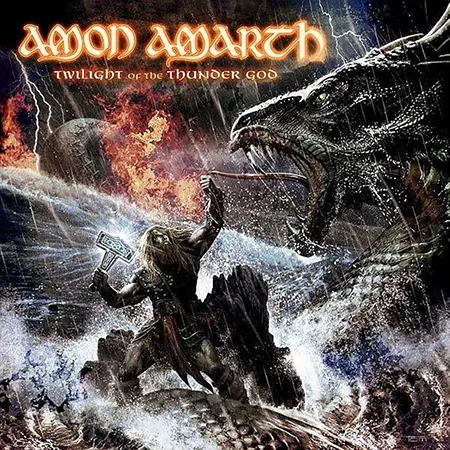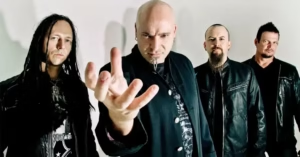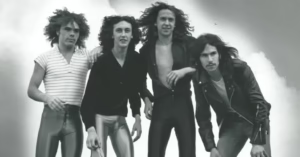Amon Amarth: Vikings of Melodic Death Metal — A Deep Dive into the Swedish Metal Phenomenon
Amon Amarth. Introduction: The Saga Begins
Since their formation in the early 1990s, Amon Amarth has risen to become one of the definitive bands in the melodic death metal scene. Originating from Tumba, Sweden, their music channels the raw aggression of death metal, enriched by melodic guitar work and powerful vocals. What truly sets them apart is their unwavering dedication to Viking mythology and Norse history, themes that permeate every facet of their art — from lyrics and album artwork to stage presence and overall identity.
Amon Amarth. Formation and Early Years (1992–1997)
Amon Amarth began life as Scum in 1992, initially playing traditional death metal. The original members — including Johan Hegg (vocals), Olavi Mikkonen and Johan Söderberg (guitars), Ted Lundström (bass), and drummer Anders Hansson — soon decided to shift focus both musically and thematically.
Changing their name to Amon Amarth in 1996, a name derived from the Sindarin term for “Mount Doom” in The Lord of the Rings, they started carving out a unique identity, fusing melodic death metal with Viking-inspired storytelling.
The band’s early demos, such as Thor Arise (1993) and The Arrival of the Fimbul Winter (1994), showcased promising musicianship and laid the groundwork for their future sound, though those recordings remained unreleased officially for many years.
Amon Amarth. Musical Style: Melodic Death Metal Meets Norse Mythology
Melodic Death Metal Foundation
At its core, Amon Amarth’s music is firmly rooted in melodic death metal, a subgenre that blends the harshness and intensity of traditional death metal with harmonized guitar melodies and structured songwriting. Their riffs are heavy yet catchy, and Johan Hegg’s deep, growled vocals provide a commanding narration that complements the epic nature of their themes.
Viking Themes and Storytelling
Unlike many bands that touch on varied or abstract lyrical subjects, Amon Amarth commits to Viking lore, Norse mythology, and tales of warriors, gods, and battles. This thematic dedication influences not only their lyrics but also their album art, stage designs, and music videos, creating an immersive Viking experience for listeners.
Songs often tell stories of heroism, war, death, and fate — with references to gods like Odin and Thor, legendary battles, and the harshness of Viking life.
Amon Amarth.Key Albums and Their Impact
Once Sent from the Golden Hall (1998)
Their official debut album introduced the world to Amon Amarth’s signature sound: heavy, melodic riffs paired with lyrical sagas of Viking valor and tragedy. It was well-received and helped establish the band’s presence in the European metal scene.
The Avenger (1999)
This follow-up album saw improved production values and more complex songwriting, refining their blend of melody and brutality. It includes fan favorites like “The Pursuit of Vikings,” which remains a live staple.
Versus the World (2002)
A heavier, more aggressive album that expanded their international appeal. The band showed a knack for balancing epic melodies with powerful riffs, solidifying their reputation.
Fate of Norns (2004)
Critically acclaimed for its maturity, this album incorporated deeper songwriting and thematic exploration. The riffs became darker, and the storytelling grew more intricate.
With Oden on Our Side (2006)
Amon Amarth’s sound reached new heights of melodic complexity and heaviness. The album’s Viking themes became even more vivid, showcasing songs like “Runes to My Memory.”
Twilight of the Thunder God (2008)
Considered their masterpiece, this album features anthems like its title track and “Guardians of Asgaard.” It included guest performances from metal legends such as Apocalyptica and Lars-Göran Petrov. The album’s blend of power, melody, and storytelling won worldwide acclaim and expanded their fan base significantly.
Surtur Rising (2011), Deceiver of the Gods (2013), Jomsviking (2016), and Berserker (2019)
These albums reflect the band’s willingness to evolve while staying true to their Viking roots. Jomsviking is particularly notable as a concept album telling a cohesive Viking story from start to finish, marking a creative milestone.
Amon Amarth. Live Performances: Bringing Vikings to the Stage
Amon Amarth’s live shows are renowned for their intensity and theatricality. They frequently use Viking-themed stage props such as shields, helmets, and replica weapons, alongside dramatic pyrotechnics and lighting. Johan Hegg’s commanding stage presence and storytelling ability captivate audiences, making their concerts immersive experiences.
The band regularly headlines major metal festivals worldwide, including Wacken Open Air, Download Festival, and Hellfest.
Band Lineup and Stability
One of Amon Amarth’s strengths is their stable lineup. Since the mid-1990s, the core members have remained consistent:
- Johan Hegg – Vocals
- Olavi Mikkonen – Lead Guitar
- Johan Söderberg – Rhythm Guitar
- Ted Lundström – Bass
- Jocke Wallgren – Drums (joined 2016)
Their tight chemistry translates into cohesive songwriting and performances, contributing to their longevity.
Influence and Legacy
Amon Amarth has been instrumental in popularizing Viking-themed metal on a global scale. Their unique fusion of melodic death metal and Norse mythology has inspired countless bands and helped carve out a distinct subgenre sometimes referred to as “Viking metal,” although the band prefers to stick to melodic death metal as their style label.
Their ability to maintain artistic consistency while evolving musically has earned them a dedicated fan base and critical acclaim.
Conclusion: The Eternal March of the Viking Metal Warriors
With over three decades of musical output, Amon Amarth remains a powerhouse in the metal world. Their commitment to crafting epic, melodic death metal steeped in Viking lore continues to resonate with fans worldwide.
From their early days to their current status as metal icons, Amon Amarth embodies the spirit of the Norse warriors they sing about — relentless, passionate, and timeless.





